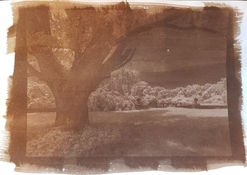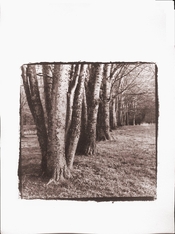Hello,
I've been working on VDB printing after spending many months with Cyanotype with happy results. I am using the B&S kit and following their directions using a homemade UV light box.
First, my exposures are really short - 1 minute to 1.5 mins - vs. up to 6 minutes with the same negative I used for cyanotype. I realize I need a higher contrast neg for VDB, but just getting started.
Next, even with the short exposure time, my prints are dark and muddy. Hardly any highlight at all.
Suggestions? What am I doing wrong? Thanks.
I've been working on VDB printing after spending many months with Cyanotype with happy results. I am using the B&S kit and following their directions using a homemade UV light box.
First, my exposures are really short - 1 minute to 1.5 mins - vs. up to 6 minutes with the same negative I used for cyanotype. I realize I need a higher contrast neg for VDB, but just getting started.
Next, even with the short exposure time, my prints are dark and muddy. Hardly any highlight at all.
Suggestions? What am I doing wrong? Thanks.





